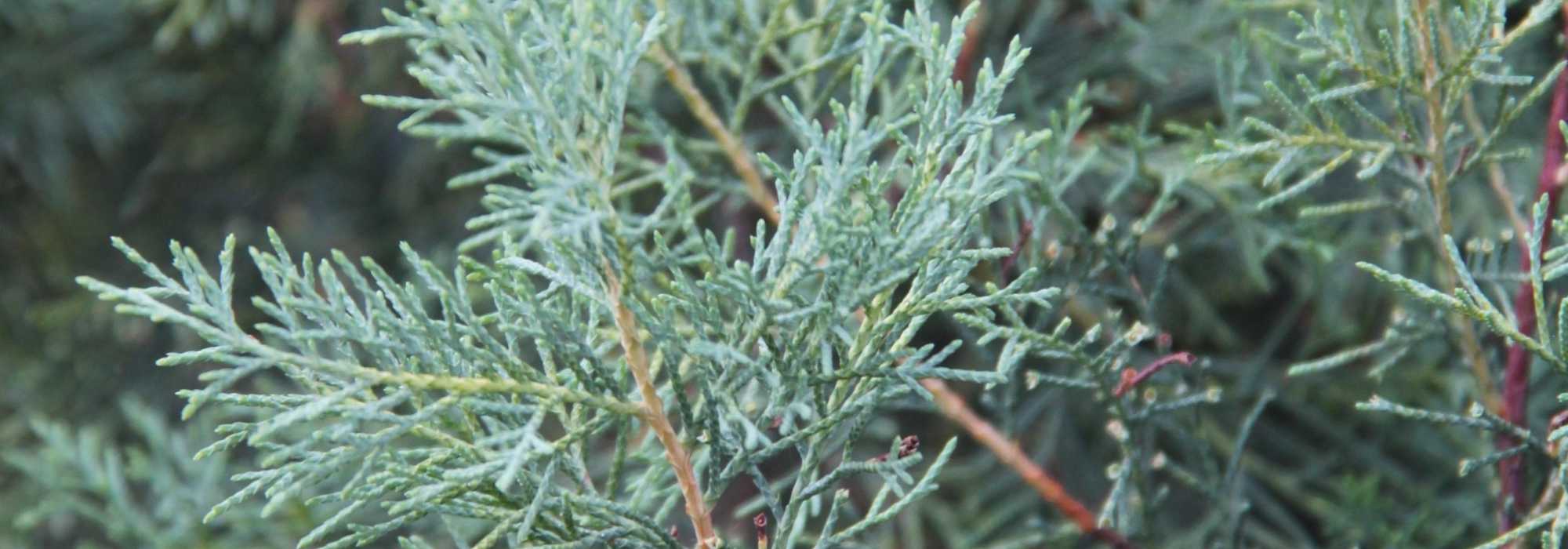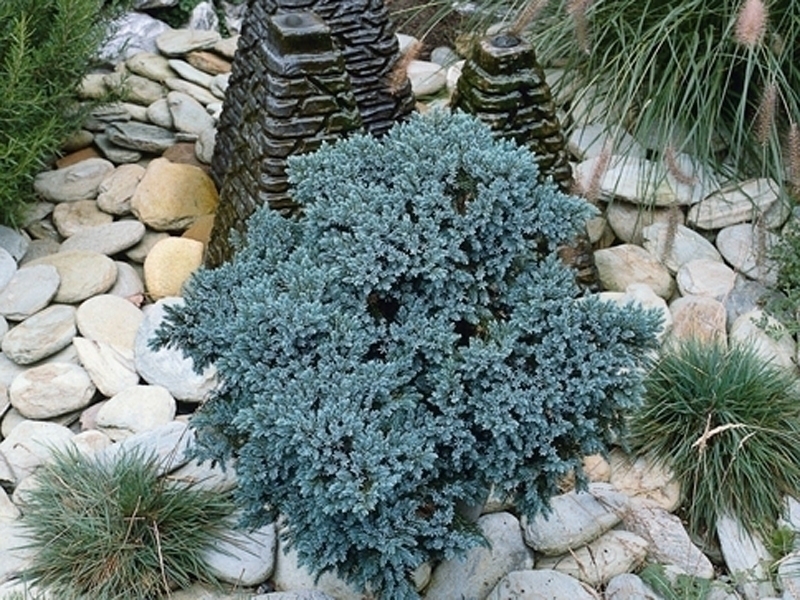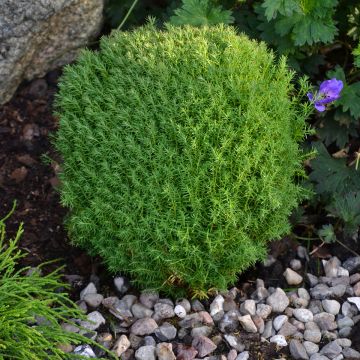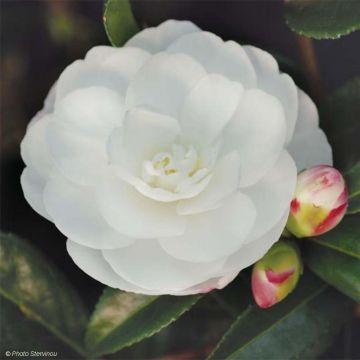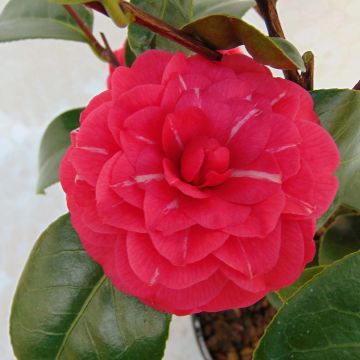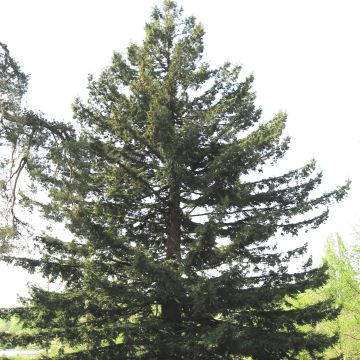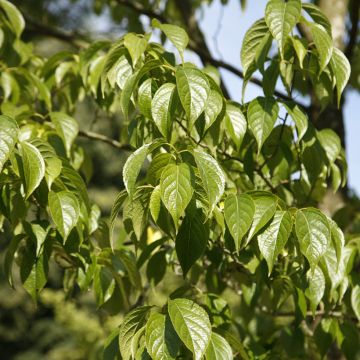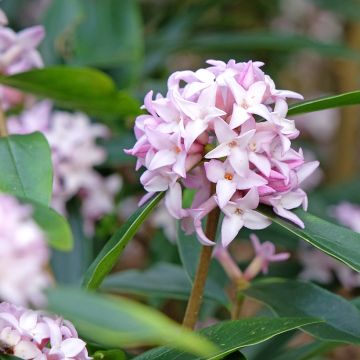

Cupressus sempervirens Totem - Florence Cypress
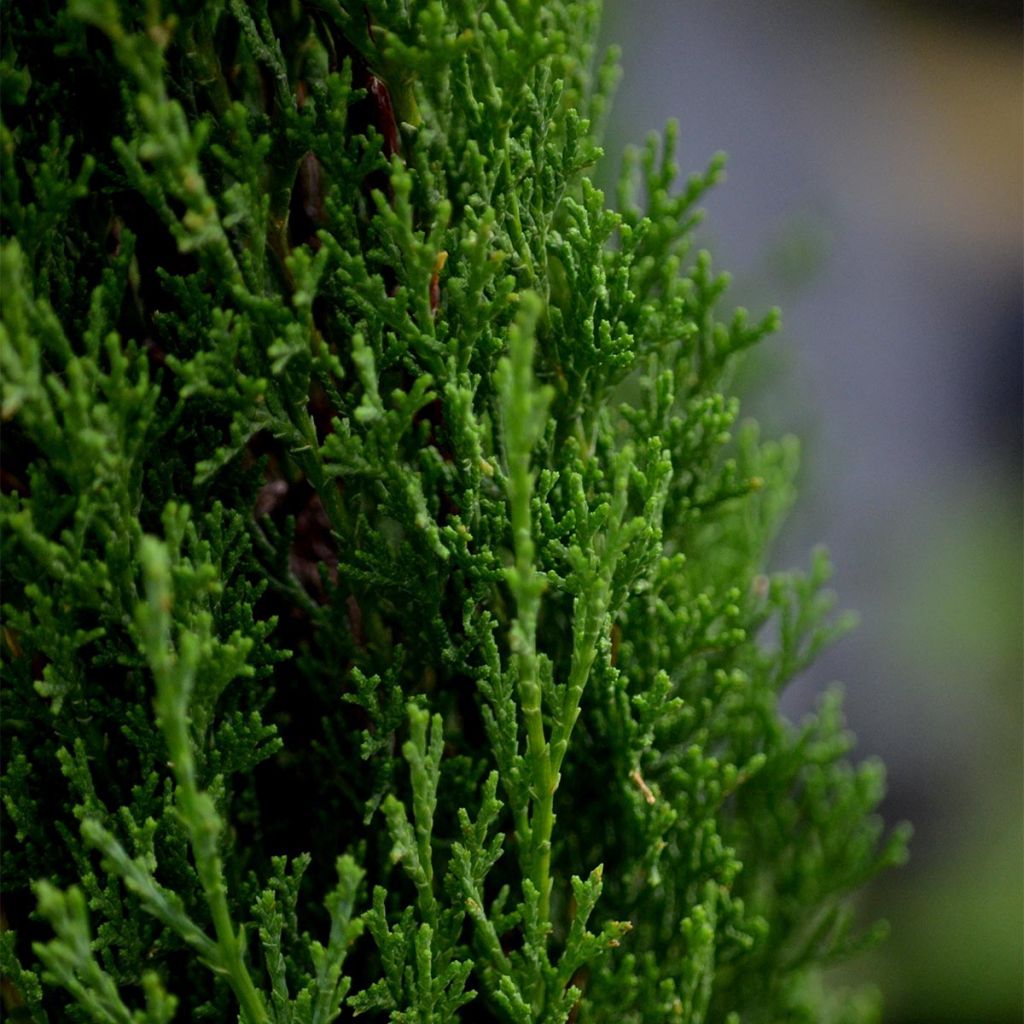

Cupressus sempervirens Totem - Florence Cypress
Cupressus sempervirens Totem - Florence Cypress
Cupressus sempervirens var. stricta Totem
Italian Cypress, Mediterranean Cypress, Pencil Pine
Finally arrived after a 2-day delay with Chronopost......... Very dishevelled, unlike this variety which is 'Totem'. Lack of watering? Or something else? Appreciation subject to later review. Promesse de fleurs does not usually subject its customers to this kind of thing.........
claire, 22/05/2025
Special offer!
Receive a €20 voucher for any order over €90 (excluding delivery costs, credit notes, and plastic-free options)!
1- Add your favorite plants to your cart.
2- Once you have reached €90, confirm your order (you can even choose the delivery date!).
3- As soon as your order is shipped, you will receive an email containing your voucher code, valid for 3 months (90 days).
Your voucher is unique and can only be used once, for any order with a minimum value of €20, excluding delivery costs.
Can be combined with other current offers, non-divisible and non-refundable.
Home or relay delivery (depending on size and destination)
Schedule delivery date,
and select date in basket
This plant carries a 24 months recovery warranty
More information
We guarantee the quality of our plants for a full growing cycle, and will replace at our expense any plant that fails to recover under normal climatic and planting conditions.

Would this plant suit my garden?
Set up your Plantfit profile →
Description
Cupressus sempervirens 'Totem', commonly known as Provence Cypress or Florence Cypress, is a tall evergreen conifer that stands out for its particularly narrow columnar habit and rapid growth during its young years. It never bears fruit, allowing it to maintain a compact foliage and an impeccable silhouette, resembling a tall dark green totem. This variety is perfect for punctuating an entrance or structuring a garden. It shows greater hardiness in well-drained soil, even rocky and poor soil, and can tolerate drought.
Cupressus sempervirens is a species in the Cupressaceae family, believed to be native to Asia but acclimatised in Mediterranean regions for a long time due to its excellent adaptation to drought, wind, and poor soils. In nature, it is found in dry and open forests, usually on limestone soil. Similar to Chamaecyparis, it differs in its rounded branchlets arranged in fascicles around the main axis, and its larger cones with woody scales. 'Totem' is a recent variety, belonging to the 'stricta' group, which gathers selected plants for their upright habit rather than horizontal.
'Totem', aptly named, is a tall and narrow variety that can reach a height of 10 m to 14 m (32.8 ft to 45.9 ft), with a spread not exceeding 1 m (3.3 ft). By the age of 6, under good conditions, it will reach a height of 6 m (19.7 ft). This variety has the advantage of not producing fruits, which weigh down and widen the branches, resulting in a messy and unkempt silhouette in other varieties. Well-branched from the base, compact, upright, and fast-growing in its youth, 'Totem' proudly carries its aromatic, dark, and fine foliage on consistently erect branches. Like that of all common cypresses, its wood is fragrant and reveals resin under a brownish-grey, fairly thin and fissured bark. Its root system is taprooted, allowing it to anchor deeply in the soil to draw water and nutrients and withstand even strong winds.
Cupressus sempervirens 'Totem' is perfect for framing an entrance, planted in a group of three, as was historically done in Provence to greet visitors and signal a welcoming human presence to lost travellers. The elegance of its column beautifully structures a garden, whether it is contemporary, Italian, or Mediterranean in style. It can also be used as a standalone specimen, surrounded by grey foliage (Artemisias, lavenders, Melianthus major, Perovskia atriplicifolia 'Blue Spire') or in an evergreen hedge, alongside Arbutus unedo, the Holm Oak, common juniper and its varieties, Ceanothus arboreus 'Skylark', and Eleagnus ebbingei for example.
Cupressus sempervirens Totem - Florence Cypress in pictures
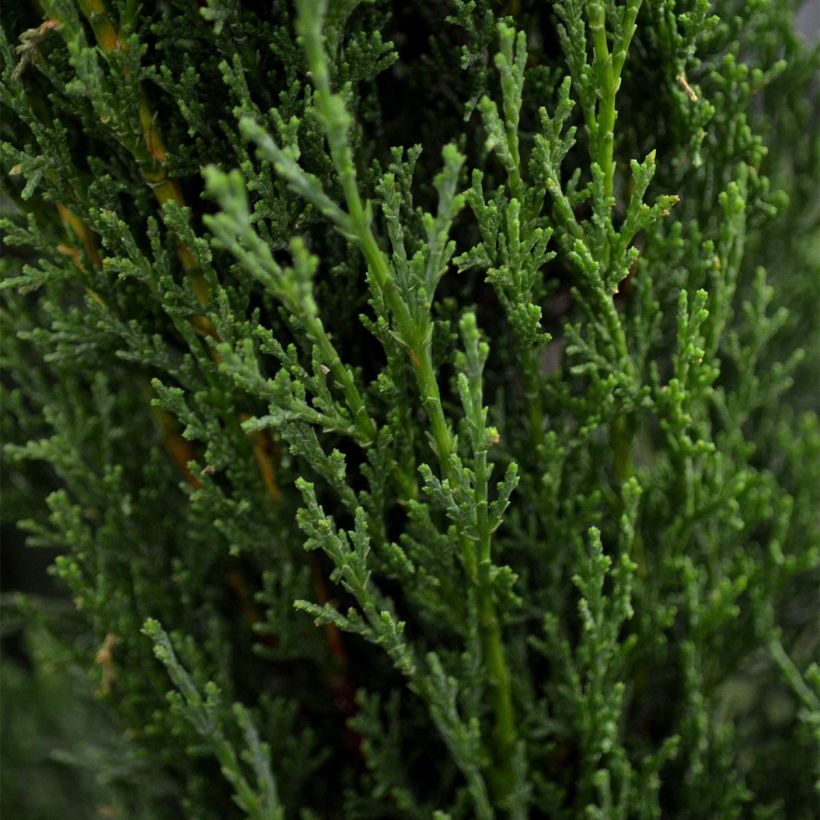

Plant habit
Foliage
Safety measures
Botanical data
Cupressus
sempervirens var. stricta
Totem
Cupressaceae
Italian Cypress, Mediterranean Cypress, Pencil Pine
Cultivar or hybrid
atteinterespiratoire
Cette plante peut entraîner des symptômes allergiques.
Evitez de la planter si vous ou vos proches souffrez de rhinite saisonnière ("rhume des foins").
Davantage d'informations sur https://plantes-risque.info
Planting and care
Choose a sunny position in well-drained soil, even rocky and poor soil. If the soil is particularly rocky, the taproot will find a crack and widen it to go down and find water, often present in the subsoil of limestone formations. It is best to attempt its cultivation in areas with not too harsh winters. This plant is theoretically hardy down to at least -15° C (5 ° F), but things get complicated in compact, clayey soil, saturated with water in winter, as is the case for many Mediterranean plants. The adaptation to limestone and to strong winds (Mistral and Tramontane) makes it a robust element in a gardening landscape.
Planting period
Intended location
Care
Planting & care advice
-
, onOrder confirmed
Reply from on Promesse de fleurs
Similar products
Haven't found what you were looking for?
Hardiness is the lowest winter temperature a plant can endure without suffering serious damage or even dying. However, hardiness is affected by location (a sheltered area, such as a patio), protection (winter cover) and soil type (hardiness is improved by well-drained soil).

Photo Sharing Terms & Conditions
In order to encourage gardeners to interact and share their experiences, Promesse de fleurs offers various media enabling content to be uploaded onto its Site - in particular via the ‘Photo sharing’ module.
The User agrees to refrain from:
- Posting any content that is illegal, prejudicial, insulting, racist, inciteful to hatred, revisionist, contrary to public decency, that infringes on privacy or on the privacy rights of third parties, in particular the publicity rights of persons and goods, intellectual property rights, or the right to privacy.
- Submitting content on behalf of a third party;
- Impersonate the identity of a third party and/or publish any personal information about a third party;
In general, the User undertakes to refrain from any unethical behaviour.
All Content (in particular text, comments, files, images, photos, videos, creative works, etc.), which may be subject to property or intellectual property rights, image or other private rights, shall remain the property of the User, subject to the limited rights granted by the terms of the licence granted by Promesse de fleurs as stated below. Users are at liberty to publish or not to publish such Content on the Site, notably via the ‘Photo Sharing’ facility, and accept that this Content shall be made public and freely accessible, notably on the Internet.
Users further acknowledge, undertake to have ,and guarantee that they hold all necessary rights and permissions to publish such material on the Site, in particular with regard to the legislation in force pertaining to any privacy, property, intellectual property, image, or contractual rights, or rights of any other nature. By publishing such Content on the Site, Users acknowledge accepting full liability as publishers of the Content within the meaning of the law, and grant Promesse de fleurs, free of charge, an inclusive, worldwide licence for the said Content for the entire duration of its publication, including all reproduction, representation, up/downloading, displaying, performing, transmission, and storage rights.
Users also grant permission for their name to be linked to the Content and accept that this link may not always be made available.
By engaging in posting material, Users consent to their Content becoming automatically accessible on the Internet, in particular on other sites and/or blogs and/or web pages of the Promesse de fleurs site, including in particular social pages and the Promesse de fleurs catalogue.
Users may secure the removal of entrusted content free of charge by issuing a simple request via our contact form.
The flowering period indicated on our website applies to countries and regions located in USDA zone 8 (France, the United Kingdom, Ireland, the Netherlands, etc.)
It will vary according to where you live:
- In zones 9 to 10 (Italy, Spain, Greece, etc.), flowering will occur about 2 to 4 weeks earlier.
- In zones 6 to 7 (Germany, Poland, Slovenia, and lower mountainous regions), flowering will be delayed by 2 to 3 weeks.
- In zone 5 (Central Europe, Scandinavia), blooming will be delayed by 3 to 5 weeks.
In temperate climates, pruning of spring-flowering shrubs (forsythia, spireas, etc.) should be done just after flowering.
Pruning of summer-flowering shrubs (Indian Lilac, Perovskia, etc.) can be done in winter or spring.
In cold regions as well as with frost-sensitive plants, avoid pruning too early when severe frosts may still occur.
The planting period indicated on our website applies to countries and regions located in USDA zone 8 (France, United Kingdom, Ireland, Netherlands).
It will vary according to where you live:
- In Mediterranean zones (Marseille, Madrid, Milan, etc.), autumn and winter are the best planting periods.
- In continental zones (Strasbourg, Munich, Vienna, etc.), delay planting by 2 to 3 weeks in spring and bring it forward by 2 to 4 weeks in autumn.
- In mountainous regions (the Alps, Pyrenees, Carpathians, etc.), it is best to plant in late spring (May-June) or late summer (August-September).
The harvesting period indicated on our website applies to countries and regions in USDA zone 8 (France, England, Ireland, the Netherlands).
In colder areas (Scandinavia, Poland, Austria...) fruit and vegetable harvests are likely to be delayed by 3-4 weeks.
In warmer areas (Italy, Spain, Greece, etc.), harvesting will probably take place earlier, depending on weather conditions.
The sowing periods indicated on our website apply to countries and regions within USDA Zone 8 (France, UK, Ireland, Netherlands).
In colder areas (Scandinavia, Poland, Austria...), delay any outdoor sowing by 3-4 weeks, or sow under glass.
In warmer climes (Italy, Spain, Greece, etc.), bring outdoor sowing forward by a few weeks.






























